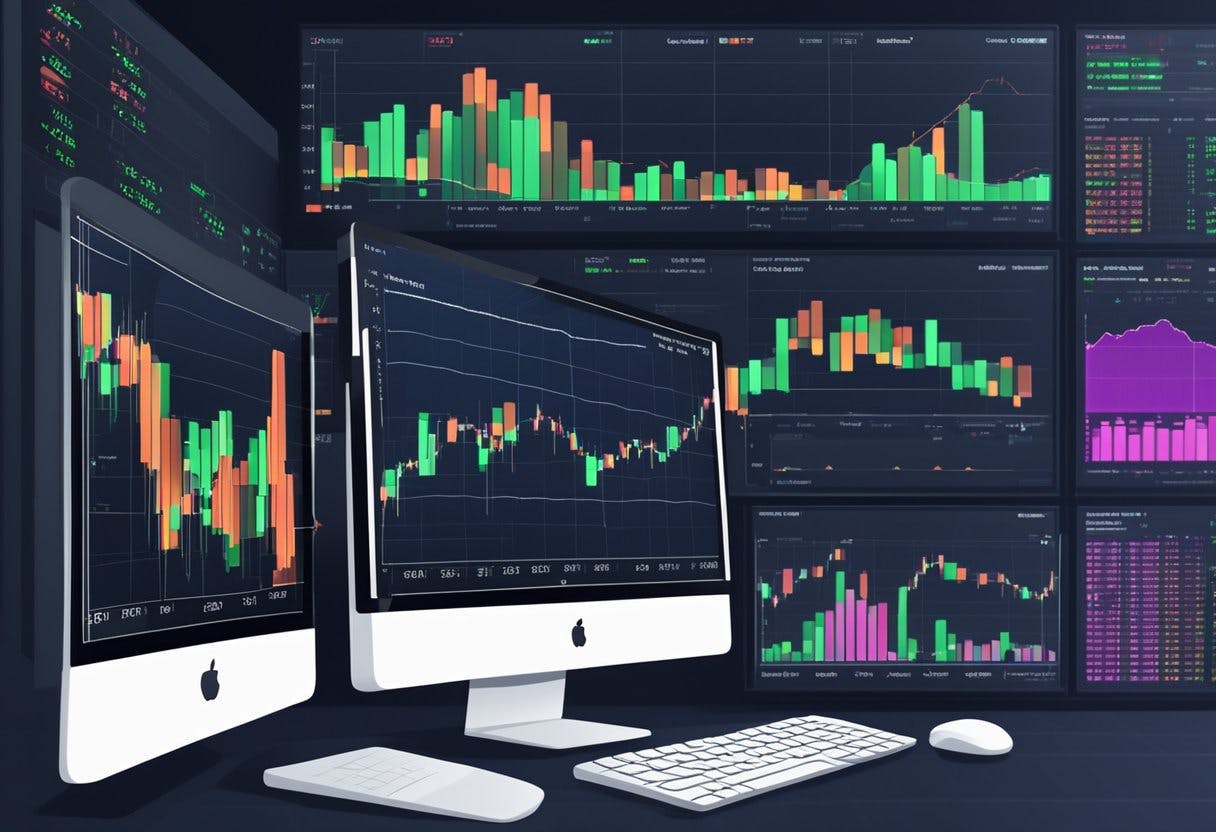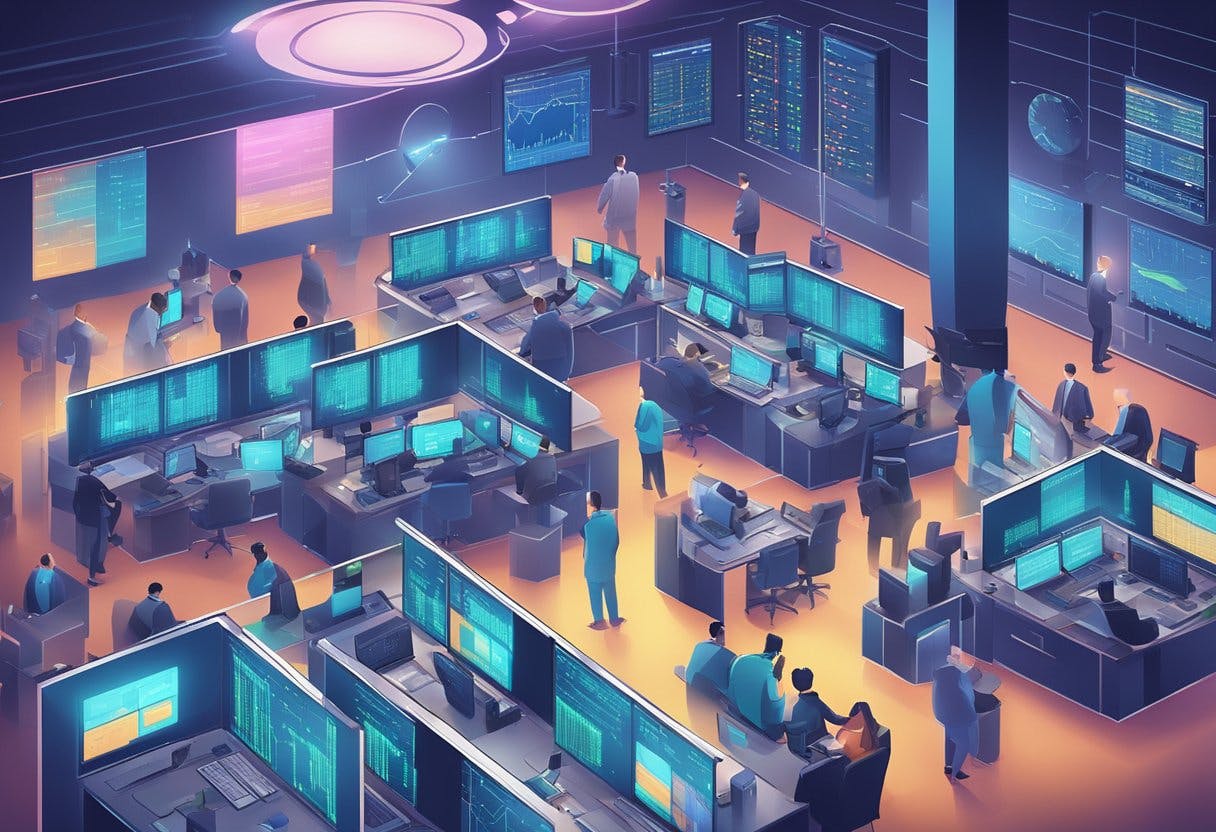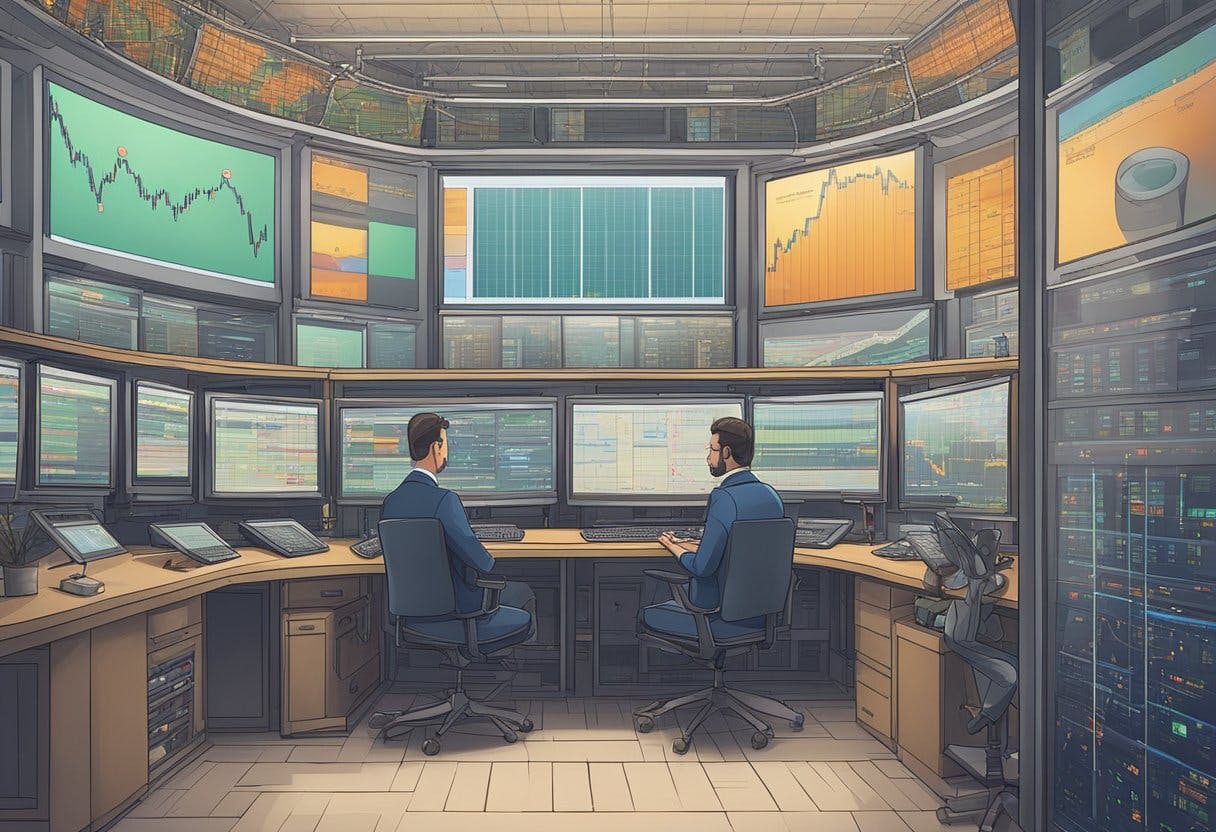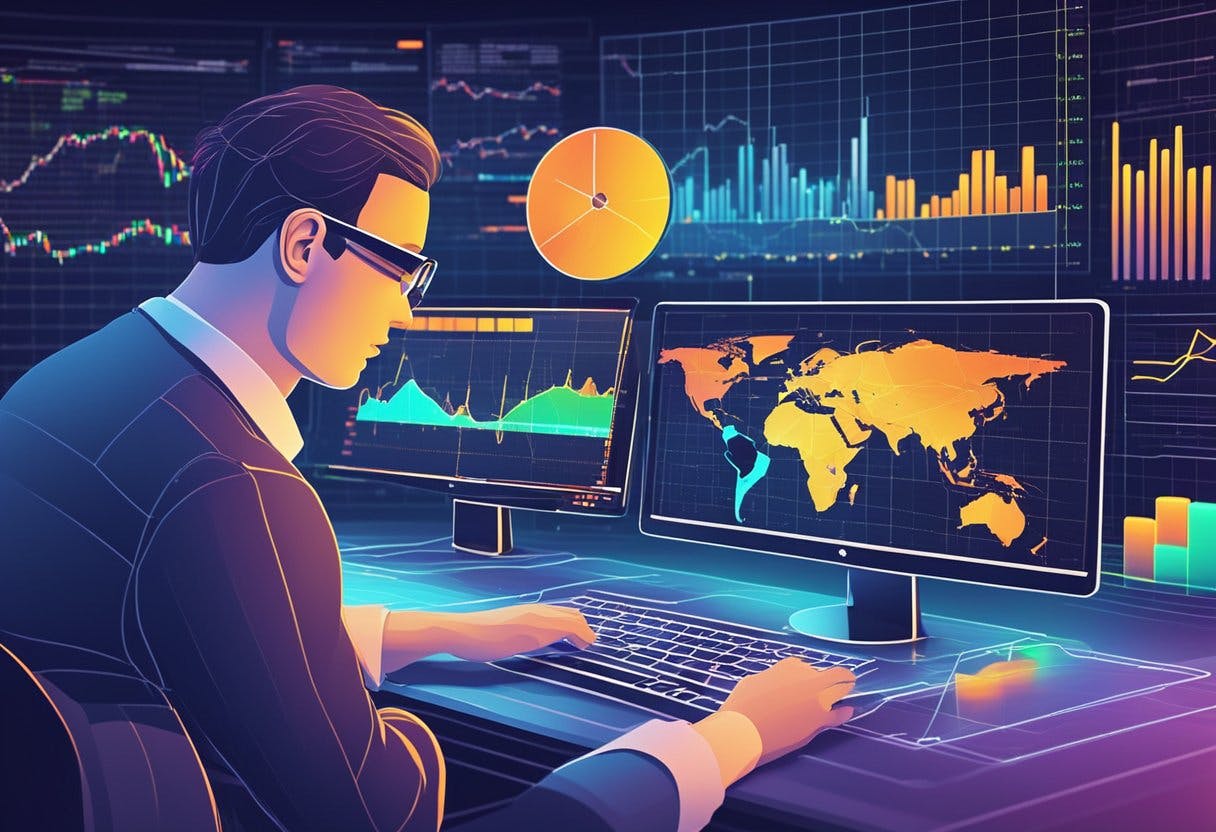
The evolution of Forex trading has come a long way since its inception. With the integration of artificial intelligence (AI) and machine learning (ML), traders can now analyze market trends and make informed decisions in real-time. This article explores the historical context of Forex trading, the fundamentals of AI and ML in Forex, the integration of AI in Forex market analysis, and the challenges and adaptations in AI-driven Forex trading.

Forex trading has been around for centuries. It started with the exchange of coins between different countries and evolved into a market where currencies are traded electronically. With the advancement of technology, Forex trading has become more accessible to the masses. AI and ML have played a significant role in this evolution, making it easier for traders to analyze market trends and make informed decisions.
The integration of AI in Forex market analysis has revolutionized the way traders approach the market. AI algorithms can analyze vast amounts of data in real-time, identify trends, and make predictions based on historical data. This has led to more accurate market analysis and better-informed trading decisions. However, there are also challenges and adaptations in AI-driven Forex trading that traders need to be aware of.
Key Takeaways
- AI and ML have revolutionized Forex trading, making it more accessible to the masses.
- The integration of AI in Forex market analysis has led to more accurate market analysis and better-informed trading decisions.
- There are also challenges and adaptations in AI-driven Forex trading that traders need to be aware of.
Historical Context of Forex Trading

Foreign exchange trading, also known as forex trading, is the act of buying and selling currencies with the aim of making a profit from the fluctuations in their exchange rates. The forex market is the largest and most liquid financial market in the world, with an estimated daily trading volume of over $6 trillion.
From Manual to Automated Trading
Forex trading has come a long way since its inception in the 19th century. Initially, currency trading was done manually, with traders physically exchanging currencies. However, with the advent of technology, the process of forex trading has become more streamlined and accessible.
Over the years, trading has become increasingly automated, with the development of trading algorithms and expert advisors. These tools use historical data to identify patterns and trends in the market, allowing traders to make informed decisions.
Role of Technology in Forex Evolution
The evolution of forex trading has been driven by technological advancements. The use of computers and the internet has made it easier for traders to access the market and execute trades. The development of trading platforms has also made it easier for traders to monitor the market and manage their trades.
The use of historical data has also played a significant role in the evolution of forex trading. By analyzing historical data, traders can identify patterns and trends in the market, which can be used to make informed decisions. This has led to the development of trading algorithms and expert advisors, which use historical data to make trading decisions.
Overall, the evolution of forex trading has been driven by technological advancements and the use of historical data. As technology continues to evolve, it is likely that forex trading will become even more streamlined and accessible, with the development of new tools and strategies.
Fundamentals of AI and Machine Learning in Forex

Artificial intelligence (AI) and machine learning (ML) are revolutionizing the world of forex trading. These technologies have the potential to improve trading strategies, increase profitability, and reduce risk. In this section, we will explore the fundamentals of AI and machine learning in forex trading.
Understanding AI and Its Impact
AI is a broad term that encompasses a range of technologies that enable machines to perform tasks that would typically require human intelligence. In forex trading, AI can be used to analyze vast amounts of data and identify patterns that humans may not be able to detect. This can lead to more accurate predictions and better trading decisions.
AI has had a significant impact on the forex market. According to the Federal Reserve, more than half of all forex trades are automated with the use of an algorithmic counterparty. This has led to increased efficiency and reduced costs for traders.
Machine Learning Explained
Machine learning is a subset of AI that involves training machines to learn from data. In forex trading, machine learning algorithms can be used to analyze historical price data, news sentiment analysis, social media trends, and other relevant factors. This can help traders make predictions and generate trading signals with high accuracy.
Machine learning algorithms can be classified into two categories: supervised learning and unsupervised learning. Supervised learning involves training a machine using labeled data, while unsupervised learning involves training a machine using unlabeled data.
Deep Learning and Neural Networks
Deep learning is a subset of machine learning that involves training machines to learn from large amounts of data using neural networks. Neural networks are modeled after the human brain and consist of layers of interconnected nodes.
In forex trading, deep learning can be used to analyze vast amounts of data and identify complex patterns that may not be visible to the human eye. This can lead to more accurate predictions and better trading decisions.
In conclusion, AI and machine learning are transforming the world of forex trading. These technologies have the potential to improve trading strategies, increase profitability, and reduce risk. By understanding the fundamentals of AI and machine learning, traders can stay ahead of the curve and take advantage of these powerful technologies.
Integration of AI in Forex Market Analysis

The integration of Artificial Intelligence (AI) in Forex market analysis has revolutionized the way traders make investment decisions. AI algorithms are capable of analyzing large amounts of data, including news events and social media, to predict market trends and make predictions about currency pairs. This section will explore how AI has been integrated into Forex market analysis and how it has enhanced predictive analytics, sentiment analysis, and technical and fundamental analysis.
Predictive Analytics and Currency Pairs
Predictive analytics is the process of using historical data to make predictions about the future. In Forex trading, predictive analytics is used to predict the behavior of currency pairs. AI algorithms can analyze large amounts of historical data to identify patterns and trends that can be used to predict future price movements. This information can be used to make informed investment decisions, such as when to buy or sell a currency pair.
Sentiment Analysis and Market Conditions
Sentiment analysis is the process of analyzing public opinion to determine the mood of the market. AI algorithms can analyze social media, news articles, and other sources of public opinion to determine the overall sentiment of the market. This information can be used to make informed investment decisions, such as when to enter or exit a trade.
Market conditions, such as economic indicators and political events, can also affect the sentiment of the market. AI algorithms can analyze these factors to determine how they will affect the mood of the market. This information can be used to make informed investment decisions, such as when to invest in a currency pair.
Technical and Fundamental Analysis Enhancement
Technical analysis is the process of analyzing historical price and volume data to identify patterns and trends that can be used to predict future price movements. Fundamental analysis is the process of analyzing economic and financial data to determine the intrinsic value of a currency. AI algorithms can enhance both technical and fundamental analysis by analyzing large amounts of data and identifying patterns and trends that may be missed by human analysts.
For example, AI algorithms can analyze news articles and economic indicators to determine how they will affect the value of a currency. This information can be used to make informed investment decisions, such as when to invest in a currency pair.
In conclusion, the integration of AI in Forex market analysis has revolutionized the way traders make investment decisions. AI algorithms are capable of analyzing large amounts of data and identifying patterns and trends that may be missed by human analysts. This information can be used to make informed investment decisions, such as when to buy or sell a currency pair.
Challenges and Adaptations in AI-Driven Forex Trading
As AI and machine learning continue to evolve, the Forex market has become increasingly reliant on these technologies. However, there are several challenges that come with implementing AI-driven strategies in Forex trading. In this section, we will discuss some of the common challenges and adaptations that traders need to consider when using AI for Forex trading.
Accuracy and Overfitting Issues
One of the biggest challenges in AI-driven Forex trading is ensuring the accuracy of the models. While AI can analyze vast amounts of data quickly, it is important to validate the models to ensure that they are not overfitting the data. Overfitting occurs when the model is too complex and fits the training data too closely, making it less accurate when applied to new data. To avoid this, traders need to use validation techniques to ensure the accuracy of the models.
Adapting to Market Volatility
Another challenge in AI-driven Forex trading is adapting to market volatility. While AI can analyze vast amounts of data quickly, it may not be able to adapt to sudden changes in market conditions. Traders need to be aware of this and implement strategies that can adapt to market volatility. This may involve using more than one AI model or incorporating human expertise to supplement the AI models.
Risk Management Strategies
Risk management is crucial in Forex trading, and this is no different when using AI-driven strategies. Traders need to have risk management strategies in place to protect their investments. This may involve setting stop-loss orders or implementing other risk management techniques.
In conclusion, AI-driven Forex trading has the potential to revolutionize the way traders approach the market. However, traders need to be aware of the challenges and adaptations that come with implementing these strategies. By validating models, adapting to market volatility, and implementing risk management strategies, traders can use AI to their advantage and stay ahead of the curve.
Future of Forex Trading with AI Advancements
As the financial industry continues to evolve, artificial intelligence (AI) and machine learning (ML) are becoming increasingly important in the world of forex trading. With the ability to analyze vast amounts of data, identify patterns, and adapt to changing market conditions, AI-powered trading systems can significantly enhance trading capabilities. In this section, we will explore some predictions for AI in forex and emerging technologies and trading models.
Predictions for AI in Forex
The future of forex trading is undoubtedly intertwined with AI technology advancements. According to Platinum Trading Solutions, AI algorithms will play an essential role in forex trading by performing tasks such as market analysis, trend analysis, and predictive modeling. These predictive models will enable traders to make more informed decisions and achieve better results.
Emerging Technologies and Trading Models
AI and ML are already being used in algorithmic trading, which involves using computer programs to execute trades automatically. In addition, machine learning models are being developed to analyze market data and identify profitable trading opportunities. According to Forex Academy, the future of forex trading is likely to involve deep learning, which will enable machines to learn from experience and improve their performance over time.
Moreover, emerging technologies like Natural Language Processing (NLP) and sentiment analysis are being used to analyze news and social media data to predict market trends. These technologies will enable traders to make more informed decisions based on real-time data.
In conclusion, the future of forex trading is bright with AI technology advancements. Machine learning algorithms and predictive models will enable traders to make more informed decisions and achieve better results. Emerging technologies like NLP and sentiment analysis will enable traders to analyze real-time data and make better trading decisions.
Frequently Asked Questions
What are the top AI forex trading software options available?
There are several AI forex trading software options available in the market, each with its own unique features and benefits. Some of the top AI forex trading software options include MetaTrader, cTrader, and NinjaTrader. These platforms use advanced algorithms and machine learning techniques to analyze market data and generate trading signals. Traders can use these signals to make informed trading decisions and maximize their profits.
How can AI enhance the predictive accuracy of forex market movements?
AI can enhance the predictive accuracy of forex market movements by analyzing large amounts of historical data and identifying patterns and trends. This allows traders to make more informed trading decisions based on statistical analysis rather than intuition. AI can also help traders identify market anomalies and react quickly to changing market conditions.
What role does machine learning play in forex trading strategies?
Machine learning plays a critical role in forex trading strategies by analyzing large amounts of historical data and identifying patterns and trends. This allows traders to develop more accurate trading models and make more informed trading decisions. Machine learning can also help traders identify market anomalies and react quickly to changing market conditions.
How do traders integrate AI and machine learning into their trading systems?
Traders can integrate AI and machine learning into their trading systems by using specialized software platforms that incorporate these technologies. These platforms use advanced algorithms and machine learning techniques to analyze market data and generate trading signals. Traders can use these signals to make informed trading decisions and maximize their profits.
What AI techniques are most effective for forex trading?
The most effective AI techniques for forex trading include machine learning, deep learning, and natural language processing (NLP). These techniques allow traders to analyze large amounts of data and identify patterns and trends that can be used to make more informed trading decisions. Machine learning algorithms can also be used to develop more accurate trading models and predict market movements with greater accuracy.
Is the automation of forex trading through AI expected to replace human traders?
While AI has the potential to automate many aspects of forex trading, it is not expected to replace human traders completely. Traders will still need to use their judgment and experience to make informed trading decisions. However, AI can help traders identify market trends and anomalies more quickly and accurately, allowing them to react more quickly to changing market conditions and maximize their profits.
Read More




